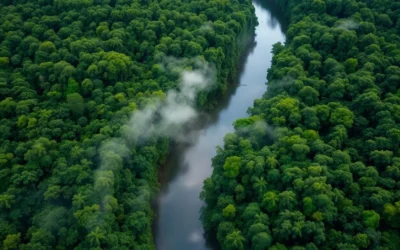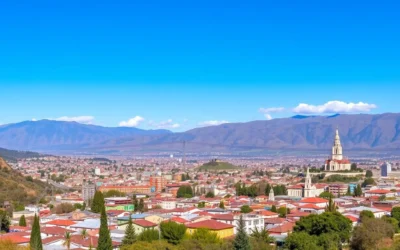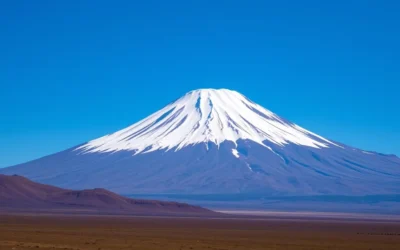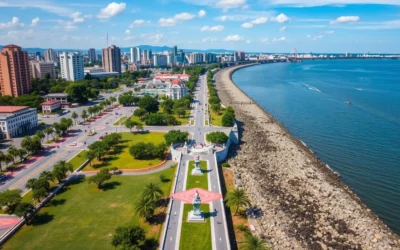Did you know that Ibarra, Ecuador’s “White City,” was completely rebuilt after a devastating earthquake in 1868? Today, this resilient Andean gem sits at 2,225 m (7,300 ft) elevation and dazzles visitors with its pristine colonial architecture, painted in brilliant whites that give the city its famous nickname. Located just 115 km (71 miles) northeast of Quito, Ibarra offers a perfect blend of historical charm, natural beauty, and cultural experiences without the crowds of Ecuador’s more famous destinations.
Getting There & Planning Your Journey
Most international travelers arrive in Ecuador through Quito’s Mariscal Sucre International Airport. From there, Ibarra is easily accessible by several transportation options:
- By Bus: Regular buses depart from Quito’s Carcelén Terminal to Ibarra, taking approximately 2 hours and costing around $2.50 USD.
- By Car: The drive from Quito to Ibarra takes about 2 hours via the E35 highway, offering scenic mountain views along the way.
- By Private Transfer: For added comfort, private shuttles and taxis are available from Quito airport directly to Ibarra.
Ready to Start Your Ibarra Adventure?
Find the best flight deals to Ecuador and begin your journey to the White City.
Best Time to Visit & Weather Tips

Ibarra enjoys a mild climate year-round thanks to its elevation in the Ecuadorian Andes. With average temperatures ranging between 10°C to 23°C (50°F to 73°F), the city offers comfortable conditions for exploring regardless of when you visit.
Dry Season (June to September)
The dry season brings sunny days with less rainfall, making it ideal for outdoor activities and exploring the city on foot. July and August are particularly popular months for visitors.
Rainy Season (October to May)
The wet season sees afternoon showers, but mornings are typically clear. March and April experience the heaviest rainfall, but the surrounding landscapes are at their most lush and green.
Travel Tip: Pack layers regardless of when you visit. Mornings and evenings can be cool due to the elevation, while midday sun can be intense. Don’t forget sun protection, as the equatorial sun is strong even on cloudy days.
Getting Around Locally

Navigating Ibarra is relatively straightforward, with several convenient options to explore the city and its surroundings:
- On Foot: Ibarra’s compact historic center is best explored by walking, with most attractions within easy reach of each other.
- Local Buses: Inexpensive city buses connect all major neighborhoods and cost around $0.30 USD per ride.
- Taxis: Readily available throughout the city, with short rides typically costing $1.50-2.50 USD.
- Rental Cars: For exploring the surrounding areas at your own pace, rental cars offer the most flexibility.
Explore Ibarra At Your Own Pace
Rent a car to discover hidden gems in and around the White City.
Where to Stay
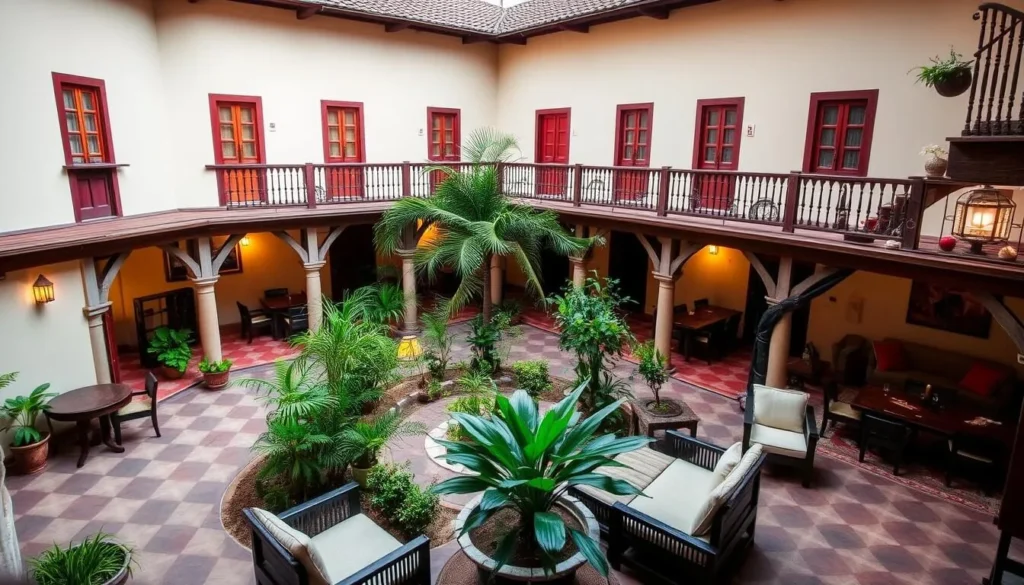
Ibarra offers a range of accommodation options to suit different budgets and preferences. From colonial boutique hotels in the historic center to modern apartments and eco-lodges in the surrounding countryside:
Historic Center
Stay in the heart of Ibarra’s colonial charm with easy access to main attractions, restaurants, and shops. Many hotels are housed in beautifully restored historic buildings.
Price range: $40-120 USD per night
Modern Neighborhoods
Areas like La Victoria offer newer accommodations with modern amenities, often at more affordable rates than the historic center.
Price range: $30-80 USD per night
Rural Retreats
For a more tranquil experience, consider staying in the countryside surrounding Ibarra, with stunning views of Imbabura Volcano and Lake Yahuarcocha.
Price range: $50-150 USD per night
Find Your Perfect Stay in Ibarra
Browse a wide selection of hotels, guesthouses, and vacation rentals to match your style and budget.
Dining & Local Cuisine

Ibarra’s culinary scene offers a delightful mix of traditional Ecuadorian flavors and local specialties. Don’t leave without trying these iconic dishes:
- Helados de Paila: Ibarra’s famous handmade fruit sorbets, traditionally prepared in bronze pans over ice. Rosalía Suárez on Calle Olmedo is the most historic spot to try this treat.
- Fritadas: Crispy fried pork served with corn, plantains, and avocado.
- Llapingachos: Potato patties stuffed with cheese and served with peanut sauce.
- Arrope de Mora: A sweet blackberry syrup often served with fresh cheese.
- Nogadas: Sweet caramel treats made with walnuts and sugar.
Where to Eat
The historic center hosts numerous restaurants and cafes, particularly around Parque Pedro Moncayo and along Calle Bolívar. For the most authentic experience, visit the Mercado Amazonas to sample local dishes at affordable prices.
Dining Tips
Lunch is typically the main meal of the day, with many restaurants offering set “almuerzo” menus for $3-5 USD. These usually include soup, a main course, dessert, and a drink, offering excellent value.
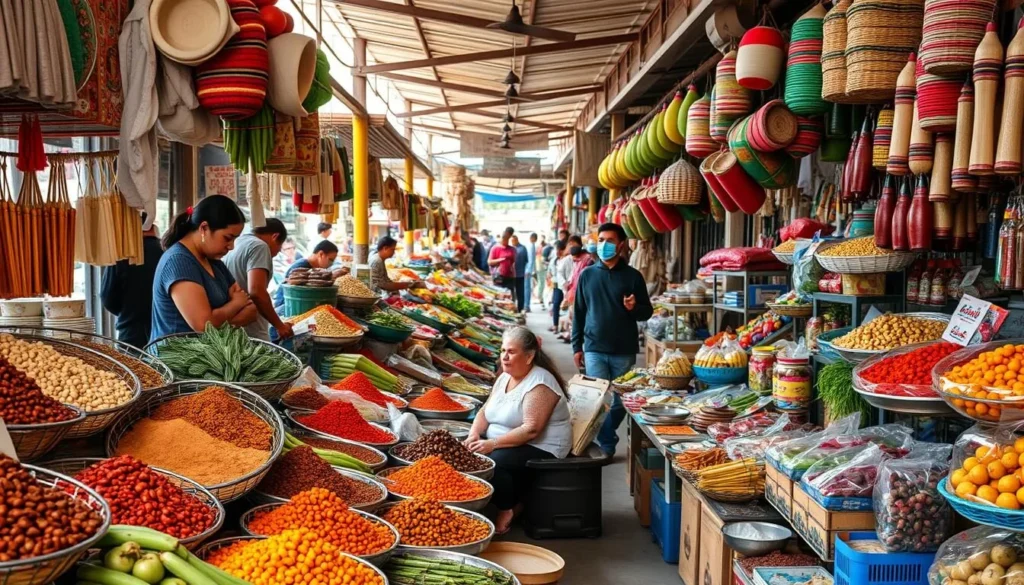
Attractions, Sightseeing & Activities

Ibarra offers a wealth of attractions that showcase its rich history, cultural heritage, and natural beauty:
Historic Center
Wander through Ibarra’s well-preserved colonial center with its striking white buildings, charming plazas, and historic churches. Don’t miss:
- Parque Pedro Moncayo (main square)
- Cathedral of San Miguel
- Basilica de La Merced
- Casa de la Cultura
Yahuarcocha Lake
Just 5 km (3 miles) from the city center, this scenic lake offers:
- Walking and cycling paths around the 10 km (6.2 mile) perimeter
- Boat rentals and water activities
- Local food stalls serving fresh tilapia
- International racing circuit for motorsports enthusiasts
Tren de la Libertad
Take a scenic train journey from Ibarra to Salinas through breathtaking landscapes, tunnels, and bridges. The 30 km (18.6 mile) route offers spectacular views and cultural experiences in Afro-Ecuadorian communities.

Experience the Best of Ibarra
Book guided tours and activities to make the most of your visit to the White City.
Museums, Cultural Spots & Festivals

Immerse yourself in Ibarra’s rich cultural heritage through its museums, historical sites, and vibrant festivals:
Museums & Cultural Centers
- Museo Arqueológico Atahualpa: Showcases pre-Columbian artifacts and the history of indigenous cultures in the region.
- Centro Cultural El Cuartel: A restored military barracks now housing art exhibitions and cultural events.
- Taller de Arte Esperanza Garzón: Workshop and gallery dedicated to traditional embroidery and textiles.
- Ibarra Railway Museum: Located in the historic train station, documenting the importance of rail transport in Ecuador’s development.
Major Festivals
Fiesta de los Lagos (September)
Ibarra’s main celebration held on the last weekend of September, featuring parades, music, dance performances, and traditional food.
Founding Day (September 28)
Commemorates the city’s founding in 1606 with cultural events, historical reenactments, and festivities throughout the city.
El Pregón & Virgen del Carmen (July 16)
Colorful parades and religious processions honoring the patron saint of Ibarra.
Inti Raymi (June)
Indigenous celebration of the sun god and harvest season with traditional music, dance, and rituals.

Sports, Nature & Outdoor Experiences
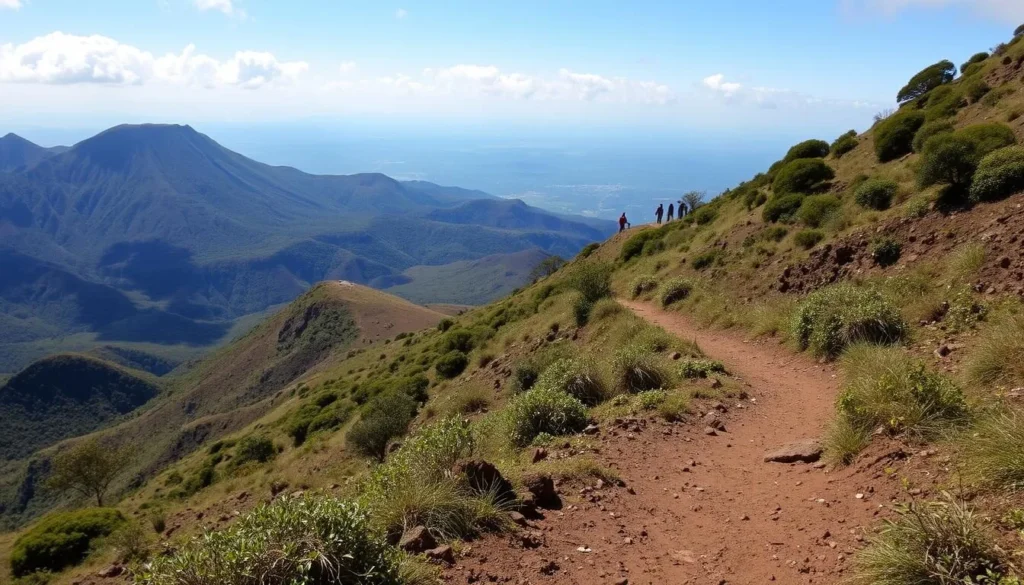
The area surrounding Ibarra is a paradise for outdoor enthusiasts, offering diverse activities amid stunning natural landscapes:
Hiking & Climbing
Challenge yourself with a climb up Imbabura Volcano (4,630 m/15,190 ft) or explore gentler trails around the region. Local guides can be arranged through hotels or tour agencies in Ibarra.
Water Activities
Yahuarcocha Lake offers kayaking, paddleboarding, and swimming. The nearby Chota Valley has excellent whitewater rafting on the Chota River with rapids ranging from class II to IV.
Paragliding
Experience breathtaking aerial views of Ibarra and the surrounding mountains with tandem paragliding flights from nearby launch sites. Flights typically cost $60-80 USD.
Natural Areas to Explore
- Cotacachi-Cayapas Ecological Reserve: Located 40 km (25 miles) from Ibarra, this diverse reserve spans from Andean highlands to coastal rainforests.
- La Carolina: A rural parish with pristine forests, waterfalls, and hot springs.
- Peguche Waterfall: A sacred indigenous site with a beautiful 18 m (59 ft) waterfall surrounded by eucalyptus forest.
- El Ángel Ecological Reserve: Famous for its unique frailejones plants and high-altitude páramo ecosystem.

Safety, Etiquette & Local Customs
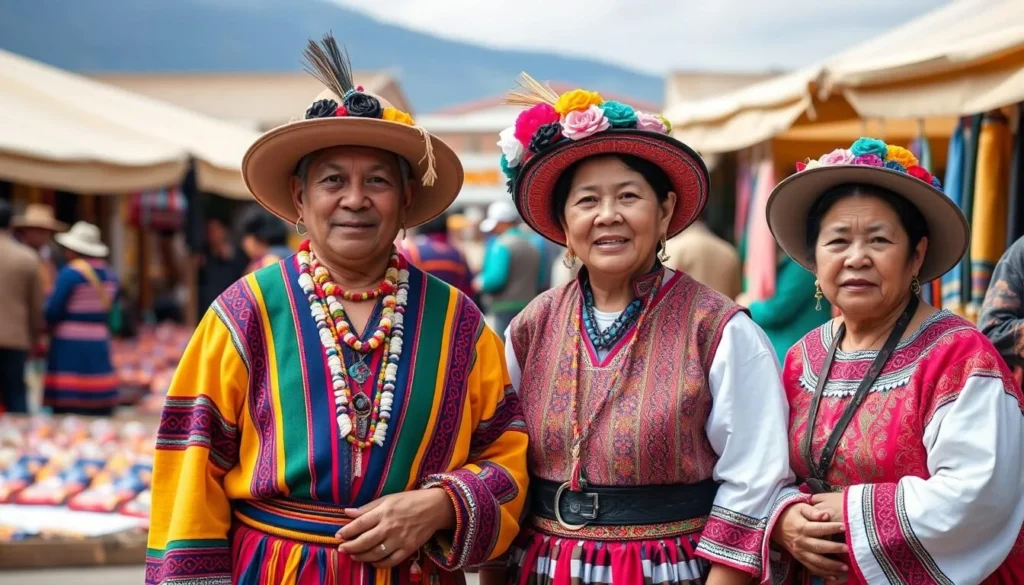
Ibarra is generally considered a safe destination for travelers, but as with any travel experience, it’s important to be aware of local customs and safety considerations:
Safety Tips
- Ibarra has lower crime rates than larger Ecuadorian cities, but standard precautions should still be taken.
- Keep valuables secure and be aware of your surroundings, especially in crowded areas.
- Use registered taxis, particularly at night.
- Carry only necessary cash and documents when exploring.
- Stay hydrated and protect against sun exposure at high altitudes.
Cultural Etiquette
- Greetings are important – a handshake with direct eye contact is standard.
- Basic Spanish phrases are appreciated, though many in the tourism industry speak some English.
- Ask permission before photographing local people, especially indigenous individuals.
- Tipping is not obligatory but appreciated for good service (10% is standard in restaurants).
- Dress modestly when visiting churches and religious sites.
Local Insight: Ibarra has a unique ethnic composition with Mestizo, indigenous (primarily Otavalo), and Afro-Ecuadorian communities. Each group contributes to the rich cultural tapestry of the region with distinct traditions, cuisines, and crafts.
Practical Travel Tips
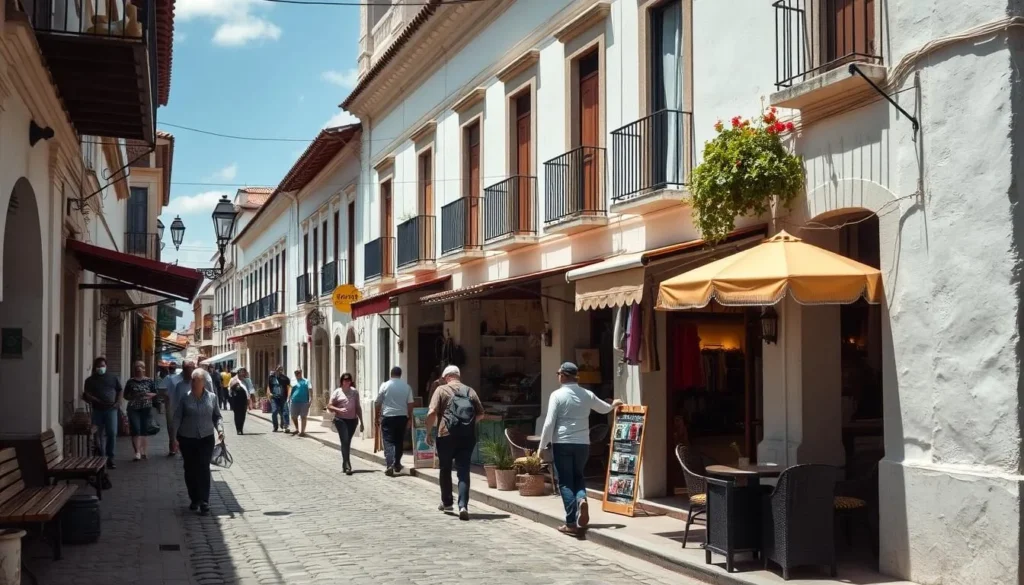
Make your trip to Ibarra smoother with these practical tips:
Money Matters
- Ecuador uses the US dollar as its official currency.
- ATMs are readily available in Ibarra, but carry some cash for small purchases.
- Credit cards are accepted at larger establishments but not universally.
- Small bills ($1, $5, $10) are preferable as many small vendors cannot make change for larger denominations.
Communication
- The country code for Ecuador is +593.
- Local SIM cards are inexpensive and available with ID at phone shops and larger supermarkets.
- Free WiFi is available in many hotels, restaurants, and public spaces.
- Download offline maps before your trip for easier navigation.
Health & Altitude
- Ibarra sits at 2,225 m (7,300 ft), which may cause mild altitude symptoms for some visitors.
- Drink plenty of water and avoid strenuous activity in your first days.
- Tap water is not recommended for drinking – stick to bottled or purified water.
- Pharmacies are plentiful and well-stocked for basic medical needs.
Day Trips: Ibarra makes an excellent base for exploring nearby attractions including the famous Otavalo Market (25 km/15.5 miles), the leather crafts town of Cotacachi (18 km/11 miles), and the artisanal woodcarving village of San Antonio de Ibarra (6 km/3.7 miles).
Experience the Magic of Ibarra

Ibarra truly lives up to its nickname as “The White City to which one always returns.” With its perfect blend of colonial charm, natural beauty, rich cultural heritage, and authentic Ecuadorian experiences, Ibarra offers travelers a glimpse into a less-touristy side of Ecuador that rewards those willing to venture beyond the usual destinations.
Whether you’re climbing the slopes of Imbabura Volcano, savoring the unique flavors of helados de paila, exploring the cobblestone streets of the historic center, or connecting with local traditions at a vibrant festival, Ibarra promises memories that will draw you back time and again.
Ready to Discover Ibarra?
Start planning your journey to Ecuador’s White City today!
The above is subject to change.
Check back often to TRAVEL.COM for the latest travel tips and deals.

